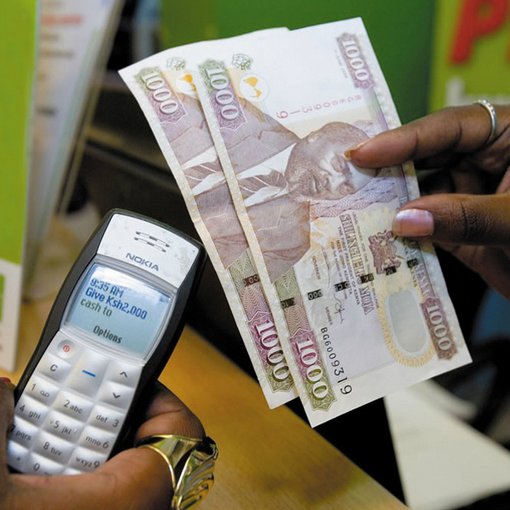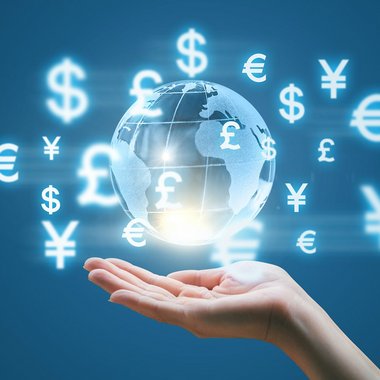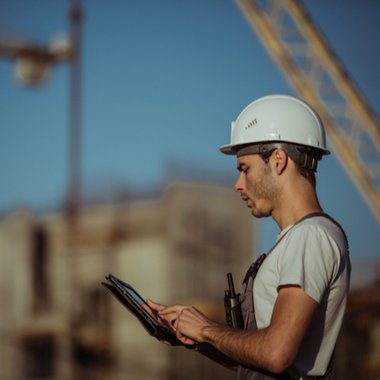
- Six minutes read
Relevance: the unsung hero of money remittance
In the developed world, we tend to take bank accounts for granted. But what if you or the person you were transacting with didn’t have access to a bank account?
Think back to the last time you either sent or received money from a family member, friend or colleague.
How did you do this? A BACS transfer? Cheque? Cash?
Chances are the transaction involved one or more bank accounts at some point.
In the developed world, we tend to take bank accounts for granted. But what if you or the person you were transacting with didn’t have access to a bank account? How would you go about sending or receiving money?
Access to banking facilities isn’t always a given
The total value of money remittances worldwide reached US$582.4 billion in 2016. And the World Bank estimates 3% to 4% per year growth in 2017 and 2018. The majority are made by migrant workers sending money back to their country of origin. Indeed, the top remittance receivers in 2016 included India, the Philippines and Nigeria.
Although sending money from your bank account to a bank account in a foreign country has never been easier, it isn’t always an option. By their very nature, bank-to-bank remittances assume the sender or the receiver has access to a bank account. However, this remains surprisingly challenging in many parts of the world. And for many, bank accounts are not relevant to their day to day lives.
Compliance, access and risk: why people are underbanked
According to figures from the World Bank Financial Inclusion Database, at the end of 2015 39% of the world’s population still lacked access to a basic bank account. The reasons are various and multifaceted, but they include compliance issues, accessibility problems, certain regions’ risk profiles or a combination of all three.
Excessively burdensome account-opening procedures
You don’t need to look too far to encounter these issues.
British banks have historically been difficult for immigrants to deal with. To open an account, you usually require a recent utility bill, Council Tax bill or bank or credit card statement as proof of a UK address. Most newcomers are unlikely to have such documents, which makes them unable to complete the account-opening process.
In the US, opening a bank account can be equally difficult for immigrants. As in the UK, you’ll need documents such as a recent utility bill to prove your address. You may also be asked to provide your social security number. Obtaining it can be a fairly lengthy and bureaucratic procedure in its own right.
Further afield, people face even deeper compliance challenges. For instance, the United Nations Refugee Agency (UNHCR) estimates there are 10 million stateless people globally. These people have trouble obtaining basic identification papers such as a birth certificate, passport or ID card. And, without proof of ID, opening a bank account is next to impossible.
Your connection has timed out – travel, internet and other accessibility issues
Even where the account-opening process isn’t itself a problem, people still run into accessibility issues.
Bank branches and ATM machines may be difficult to reach, for instance due to large distances, poor road infrastructure and lack of quality transport links. At the same time, using internet banking facilities may not be an option. As this report on the worldwide state of the internet shows, internet connectivity in Q4 2016 was excruciatingly slow or practically non-existent in parts of Africa and South America.
Remittances and de-risking: an unholy alliance
Last but not least, there seems to be a growing trend towards de-risking. Many international banks and financial institutions are pulling out of certain regions due to high operational costs or because of real or perceived anti-money laundering or terrorist financing risks.
Bank-to-bank remittances depend on correspondent banking relationships. So, by shutting down operations in areas deemed too risky or costly, entire communities are being cut off from the global financial system.
Alternative remittance technologies - including the underbanked
In recent years, there has been a growing push for financial inclusion on an international scale. At EU level, the Payment Accounts Directive now gives all EU citizens the right to open a bank account, irrespective of their financial situation and personal circumstances. Similarly, the World Bank has set itself the ambitious target of achieving universal financial access by 2020.
But while increased access to bank accounts is important, it’s only one piece of the money remittance puzzle. People also need to receive money in a way that makes sense to them and is relevant to their day-to-day lives.
In predominantly cash-based societies such as the Philippines, where only 28% of the population has access to a bank account, cash pickup is a lifeline. Not only does it solve the accessibility problem by doing away with the bank account entirely, it also delivers money directly in the format most people will need: cash.
Unfortunately, the compliance issues inherent in cash-based transactions - such as those around understanding the origin of funds - can make this method seem unpalatable to remittance service providers.
So how do you empower underbanked cash users in the digital age whilst still providing them with a remittance method that makes sense to them?
Mobile money networks: an alternative infrastructure to move money
Where access to a bank account is still an issue in many regions of the developing world, mobile network penetration is high globally. In Colombia, for instance, only 38% of the population had a bank account in 2015. By contrast, 70% of the population had a mobile phone, 40% of which were smartphones.
Mobile money builds on this ecosystem, using the existing relationship mobile network operators have with their customers to resolve compliance issues such as know-your-customer (KYC) checks. In Kenya, for instance, M-Pesa facilitated about US$145 million worth of transactions every day in 2016.
Crucially, while money is saved electronically in your mobile money account, you can also receive cash from another person and then make cash withdrawals from the same place you already buy your airtime. And you don’t need a sophisticated smartphone to operate the account. The basic predecessor to today’s smartphones will do.
Remittance cards as international money delivery systems
Remittance cards are somewhat more sophisticated than cash pickup and mobile money. You need ID to register, which means there are compliance checks and balances in place. And while a bank account isn’t strictly necessary, you do require access to electronic payment terminals or to an ATM (if you need cash). The former are a rare luxury in many developing nations, where ATM charges can be eye-watering.
With that being said, as the global push towards digitisation continues, remittance cards are gaining momentum as a way of giving the underbanked access to the financial system. In a world first, for instance, the Nigerian government has partnered with MasterCard to provide national ID cards that double as payment cards, which will grant access to the financial system to millions of previously underbanked people.
But what if money remittance could not only deliver relevance, but also value to the recipient?
Stepping it up: purposeful remittance
Bill payment allows the sender not just to send money to the receiver, but also to direct that money towards a definite purpose: such as the payment of a specific debt. Put simply, it’s relevance taken to the next level.
An up-and-coming remittance method, bill payment uses existing payment rails, making it straightforward to implement. Aside from helping out recipients financially by paying off debts such as utility bills, rent or school fees directly, it can also be used by benefactors to sponsor specific community projects back home with more accountability.
Looking ahead: remittance services must be global, but also local
Bank-to-bank remittance services will always remain popular. They’re easy to launch and relatively safe to operate, because they have a robust global infrastructure as their foundation. But while ease, safety and convenience are important, we must not lose sight of recipients’ day-to-day realities.
Making bank accounts more accessible to a wider swathe of the global population undoubtedly matters. However, local relevance and nuances play an equally crucial role.
At the end of the day, people will use what makes sense to them and what they’re comfortable with. By providing access to a wider range of remittance methods, more and more underserved people will be brought closer to and gain trust in a financial system that, so far, has overlooked them.




